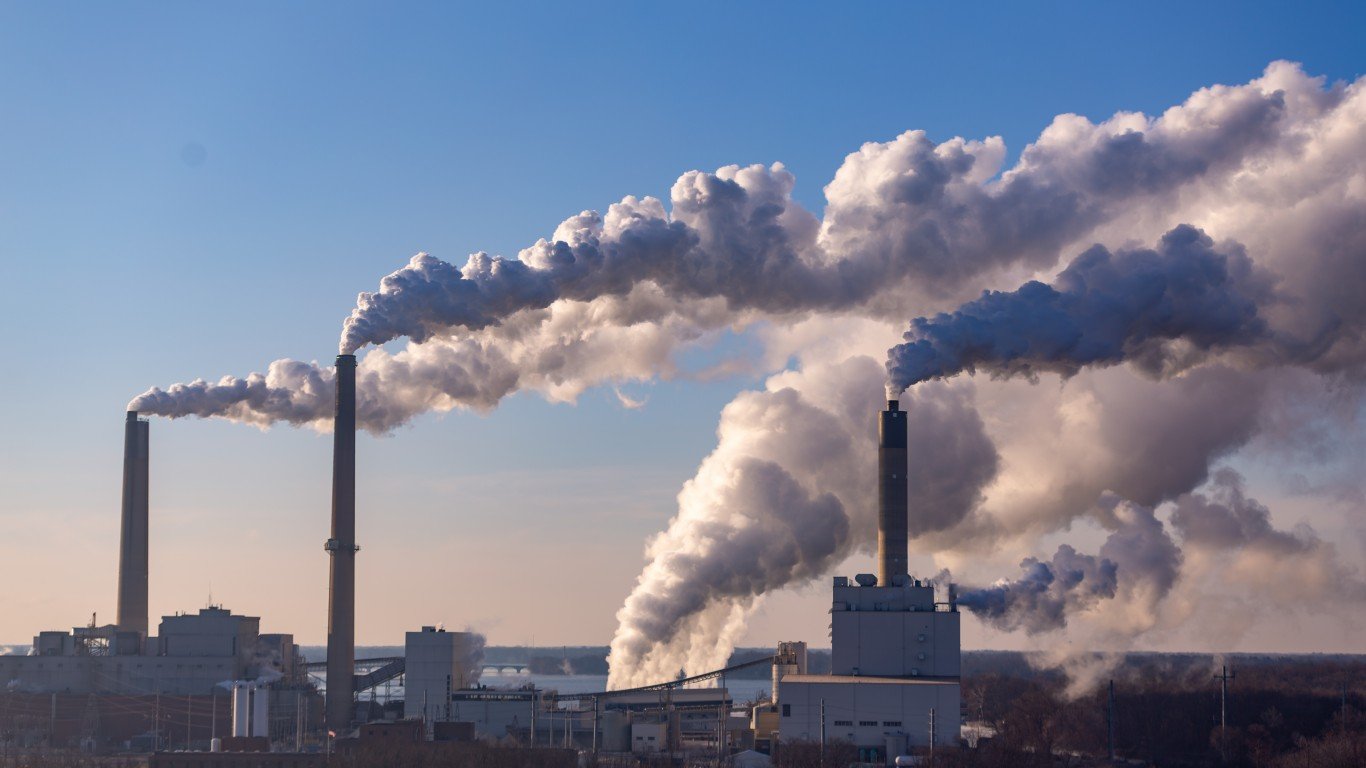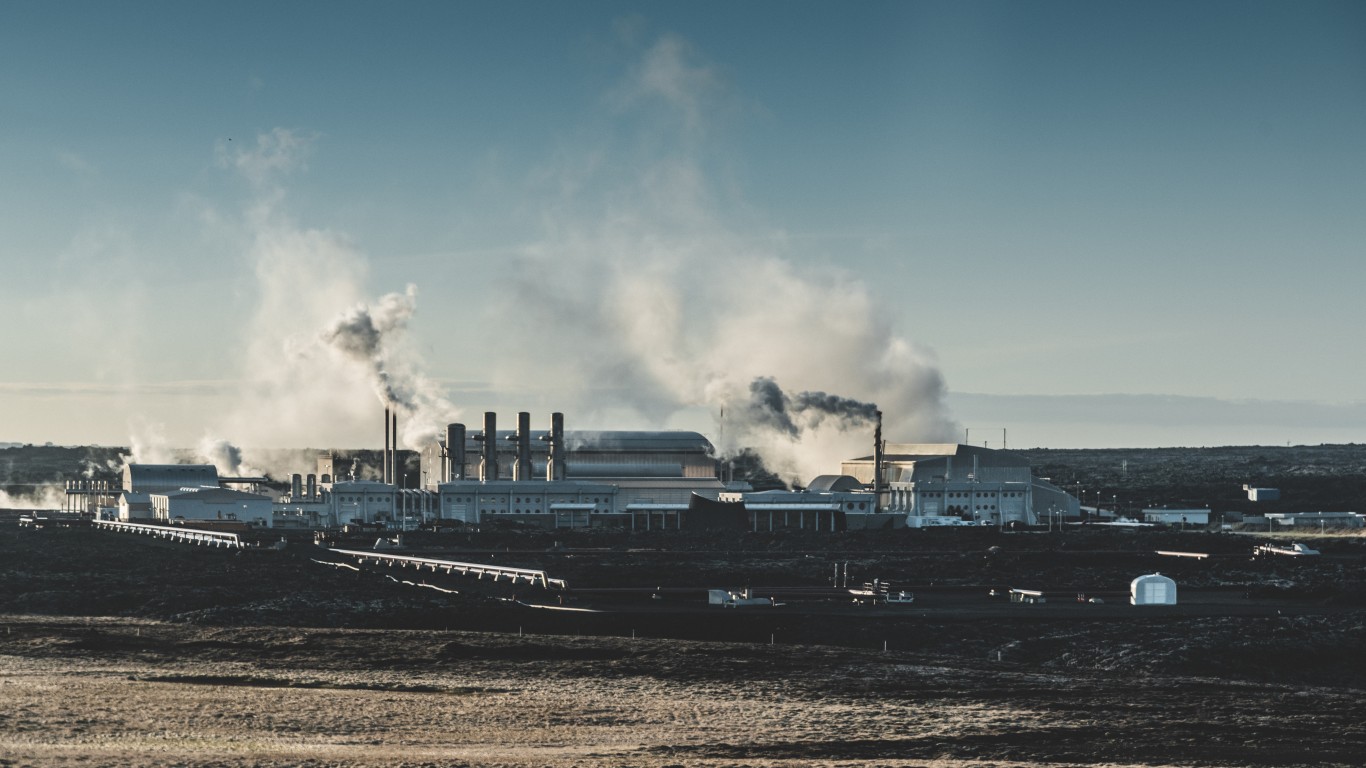
40. United Arab Emirates
> Total CO2 emissions change 2010-2020: -16.81%
> Total CO2 emissions change 1971-2020: 609.92% — #43 largest increase of 145 countries
> Total CO2 emissions 2020 in million tons: 150.38 — #33 largest of 145
> CO2 emissions per capita change 2010-2019: 0.70% — #74 largest increase of 144
> Total GHG emissions change 2010-2019: 16.48% — #38 largest increase of 88
Even though the United Arab Emirates has made strides in reducing CO2 emissions, the World Health Organization still considers air quality in the nation on the Arabian Peninsula unsafe. The country’s stated goal is to reach net-zero emissions by 2050. The UAE said in a government report that it began financing clean energy projects about 15 years ago and has invested over $40 billion in the sector thus far.

39. United States
> Total CO2 emissions change 2010-2020: -16.97%
> Total CO2 emissions change 1971-2020: 7.96% — #111 largest increase of 145 countries
> Total CO2 emissions 2020 in million tons: 4,716.20 — #2 largest of 145
> CO2 emissions per capita change 2010-2020: -24.86% — #33 largest decline of 144
> Total GHG emissions change 2010-2020: -16.91% — #17 largest decline of 88
The United States, one of the world’s biggest polluters, has rejoined the Paris Agreement under President Joe Biden. Former President Donald J. Trump had withdrawn the U.S. from the accord in 2017. The Biden Administration has said that the United States will aim to cut greenhouse gas emissions by 50% to 52% by 2030 from 2005 levels.

38. Israel
> Total CO2 emissions change 2010-2020: -17.48%
> Total CO2 emissions change 1971-2020: 247.44% — #66 largest increase of 145 countries
> Total CO2 emissions 2020 in million tons: 56.39 — #53 largest of 145
> CO2 emissions per capita change 2010-2020: -29.94% — #18 largest decline of 144
> Total GHG emissions change 2010-2020: -14.64% — #18 largest decline of 88
In July, the Israeli government set a goal for the nation to generate 85% less greenhouse gasses by 2050 than it did in 2015. The country also resolved to reach an interim target for 2030 of a 27% reduction in emissions.

37. Iceland
> Total CO2 emissions change 2010-2020: -19.00%
> Total CO2 emissions change 1971-2020: 99.43% — #85 largest increase of 145 countries
> Total CO2 emissions 2020 in million tons: 2.94 — #136 largest of 145
> CO2 emissions per capita change 2010-2020: -34.23% — #17 largest decline of 144
> Total GHG emissions change: No data
About 48% of Iceland’s carbon dioxide emissions are generated by heavy industry. The Nordic country has an interesting solution to disposing of CO2 — it takes captured carbon and injects it into rock and turns it into stone.

36. Croatia
> Total CO2 emissions change 2010-2020: -19.21%
> Total CO2 emissions change 1971-2020: 46.67% — #99 largest increase of 145 countries
> Total CO2 emissions 2020 in million tons: 16.99 — #90 largest of 145
> CO2 emissions per capita change 2010-2020: -16.57% — #43 largest decline of 144
> Total GHG emissions change: No data
Although Croatia ranked among the top 40 countries in decreasing emissions the fastest, the Balkan nation has slipped in the Climate Change Performance Index for 2022. Croatia dropped 10 places from last year, scoring poorly in two of the four categories evaluated — GHG emissions and energy use. It did well in renewable energy and had some success in climate policy.

 24/7 Tempo
24/7 Tempo




